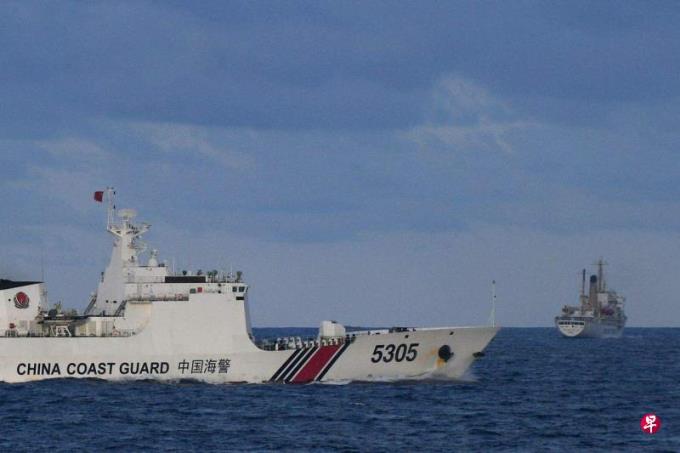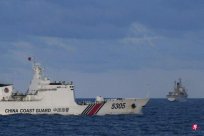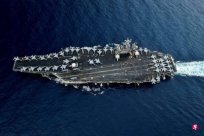
The appearance of the US ships frequently appeared in the surrounding waters, and the continuous heating up the tension of the South China Sea and the Taiwan Strait made China aware of the importance of the navy in response to the Indo -Pacific strategy.
Recently, China has rapidly promoted the navy commander Dong Jun as the Minister of Defense and replaced Li Shangfu, who was removed from office.Hu Zhongming was promoted to general and replaced Dong Jun as a naval commander.Dong Jun is the first Chinese defense minister with the navy background. He and Hu Zhongming's rocket -style promotion reflect the rising position of the navy in China's military modernization. It also reflects the urgent urgent response to the American aggressive Indo -Pacific strategy at sea at sea.need.
Depending on the US India Strategy as a major threat to maritime security
The Indo -Pacific Strategy in the United States has been officially proposed and implemented by the Trump administration. President Bayeng has continued after the stage of Pan Deng. It has now become the core component of the policy of the US Asia -Pacific region and even the global strategy.The important content of the Indo -Pacific Strategy includes a country with a combination of the United States, ensuring freedom of navigation at sea, and regularly wearing the Vietnamese China Sea, the Malacca Strait, the Taiwan Strait, and the East China Sea.With the implementation of the U.S. Indo -Pacific strategy, tropical marine areas such as the South China Sea and the Taiwan Strait have become the main battlefields of the Sino -US game.
Historically, the military that Chinese and the United States rely on military competition have undergone a transition from the army to the strategic missile forces to the power of the navy.During the Korean War in the 1950s, the Chinese army launched positive battles with the US military on land, and Sino -US relations have deteriorated.In the years of the Cold War, China has gradually independently developed nuclear weapons and long -range intercontinental missiles, maintaining strategic nuclear deterrence with the disparity with US military equipment.
The primary goal of strategic nuclear deterrent methods such as nuclear missiles is that it is to scare the opponent rather than the offensive, and it is the priority choice for strength in the laid -down country.When the second artillery force of the strategic missile was promoted to the Rocket Army in 2016, the weight of this nuclear deterrent method in the Sino -US game is even more prominent.Wei Feng and General of the first Rocket Army Commander -in -chief were appointed Minister of Defense in 2018. Although the successor Li Shangfu is not directly from the Rocket Army, he is also a well -known Rocket engineer and aerospace expert.This shows that during this period, China regarded the strategic deterrence power such as missiles as a trump card in the US military strategy.With the gradual effort of the US India Strategy to the waters around China, especially the surrounding circle of the first island chain, and increasing the maritime military exercises with the allies and joint cruise, China has begun to feel, relying on traditional strategic deterrence.Can't cope with security challenges from sea.The continuous heating up in the surrounding waters, as well as the tension of the South China Sea and the Taiwan Strait, made China aware of the importance of the navy in response to the Indo -Pacific strategy.Recently, China and the Philippines related to sovereignty over the South China Islands Reef have intensified. The Taiwan DPP government has become increasingly touched by mainland policies, which has prompted China to strengthen navy construction and respond to maritime security issues.
"Gray Rhino" will come from sea in the future?
As a mainland country, China's military strength lies in the army, and the navy is a long -term shortcoming.During the civil war, the Chinese People's Liberation Army had not been able to fight the Taiwan Strait because of the lack of strong navy and the intervention of the US fleet. As a result, China has also been left to this day. China has also become a rare superpower in the world that has not achieved unified unified unified.
Nowadays, the U.S. Indo -Pacific strategy is constantly increasing, and the Western Pacific has become quite quiet.China and Southeast Asian countries have conducted long -term negotiations for more than 20 years in order to reach the Code of Conduct in the South China Sea, but they have not yet made substantial progress.When the Philippine President President President Macos visited the headquarters of the Indo -Pacific Command, the Philippines had been in contact with neighboring countries such as Malaysia and Vietnam due to limited progress and discussed the Code of Conduct for the South China Sea alone.
Although China and the United States have resumed military contacts that have been restored for a while, maritime political mutual trust is still lacking.Between China and the United States and its allies, they are aggressive regarding each other's maritime behavior, and they regard strengthening the strength of the naval as a top priority.Recently, the media announced that the third aircraft carrier in China has entered the end of the construction, and the three electromagnetic ejection tracks on the deck are exposed for the first time.This means that the more advanced ejection take -off, which will replace the skid -type take -off used by the current two aircraft carriers.In the past 10 years, the Chinese Navy has maintained a high -time high -tech, and a larger shipbuilding plan has continued.This stimulates the US military to increase its navy investment and try to maintain the advantages of navy equipment.
The United States also requires allies such as Japan, the Philippines, and Australia to increase their naval investment to deal with the rising Chinese navy.
Modern history shows that the rise of the rising powers often consider ships and huge navy forces as an important symbol of modern industrial capabilities, and it is also a weapon for influence with existing hegemonic states.Prior to the First World War, the rise of Germany and Britain, France, and other countries fell into a ship -making contest for a fearless ship, which contributed to the outbreak of the First World War to a certain extent.Even if the end of World War I failed to stop the ship -making competition, Britain, France, the United States, and Japan had to be limited to the Washington Treaty to make up for the deficiencies of the Versailles Treaty.The Washington Treaty later did not obtain the serious observance of the powers. The intensification of the US and the Japanese Navy competitions eventually contributed to the outbreak of the Pacific War.
Under the current situation, the East Asian Maritime Security Bureau is not optimistic.There are no constraints similar to the Washington Treaty between countries, and there are no signs of hot hot issues.In recent years, the "gray rhinos" in the field of international security has emerged endlessly, such as the Ukrainian war and the Middle East conflict.Whether the "gray rhino" in 2024 will come from sea and deserves to be vigilant.To strengthen military communication from various countries and maintain the smooth communication channels, it will help prevent the "gray rhinos" in East Asia.
The author is the deputy director and senior researcher of the East Asia Research Institute of the National University of Singapore



